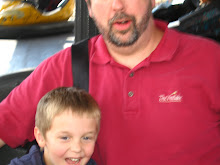"Are your clubs obsolete?" That's the question Golf Digest asks here, in an article about upgrading to the latest technology. It comes complete with a long list of clubs the magazine considers to be in various stages of obsolescence, including some models (especially drivers) released as recently as 2008. Obsolete? Really? (Image: The Whiffler Collection)
According to Merriam-Webster, the primary meaning of the word "obsolete" is: "no longer in use or no longer useful." Think of Beta format videotapes, computer floppy disks, and my size-34 pants. But "obsolete" can also mean: "of a kind or style no longer current." In other words, "old-fashioned." (Again, my pants come to mind.)
OK, fine. By that definition, some (or perhaps even all) of the clubs in my bag are indeed obsolete. But they still do the same job, the same way, as more modern golf implements: They propel the ball in the general direction of, and ultimately into, a 4.25-inch hole in the ground some distance away. They are both "useful" and "in use." Obsolete? No more so than my Popeil Pocket Fisherman.
Regular readers may have figured out by now that The Whiffler is pretty cheap – though I prefer to say "frugal," "fiscally conservative," or "tighter than John Daly's Lap-Band." How about "family rich, golf poor"? That is to say, golf is high on my list of passions but fairly low on the financial priority scale. I prefer to put my limited golf budget toward greens fees, par-3 rounds with the Golden Bear Cub, and pre-round donuts rather than new stuff.
And when I'm honest with myself, that's at the heart of my love/hate relationship with equipment. It occurred to me recently that if I had unlimited resources I would probably be a golf club junkie. But I don't, so instead I find myself mildly resentful of the ongoing golf technology revolution.
When I was a naive teen-age golf nut poring over the pages of Golf Digest, there were lots of gadgets and gizmos advertised in the back that were said to add yards to your tee shots and cut strokes from your score. I remember once pointing some of these things out to my dad, who replied, "Well, according to these ads, if you used this, this, this, and this, and added up all those claims, you'd hit the ball 400 yards and shoot 60 every time. And I don't think that's going to happen." My dad was in advertising, and he knew not to take every claim literally. It was a lesson I took to heart. (He also taught me the value of hard work. Thanks for trying, Dad.)
When it came to clubs, there were good ones and not-as-good ones, but I never felt I was at a significant disadvantage when competing with my older Walter Hagen irons and Johnny Miller woods. When I splurged and bought myself a set of Wilson Staff woods as a high-school graduation gift to myself (Chargers RULE! Class of '81! Wooooo!!!), I didn't necessarily expect them to improve my game. I bought them partly for the prestige of owning fine clubs (I admit) and also because it seemed like a good investment (it was). I fully expected to play them for a lifetime, or at least until they wore out.





